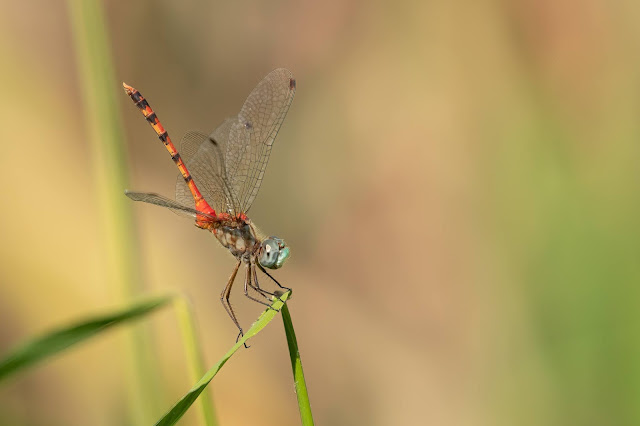Nothing Says Fall Like a Blue-Faced Meadowhawk
 |
| Blue-Faced Meadowhawk at the Homer Lake Wetland, September 29, 2021 |
If you take a walk in the area where the wetland water used to be, you'll see dozens of these guys perched in the vegetation or chasing each other around. These are male blue-faced meadowhawks and they're defending good positions for when the females show up. There is no longer any standing water in the wetland, but several meadowhawk species have the strategy of dropping their eggs in areas they expect there to be water come late Fall or early Spring. In addition to ephemeral pools of water being fishless, already a great advantage for the many species that prefer ephemerals, I think the meadowhawk strategy of dropping eggs in the fall where there is no water may also give them a competitive advantage over other dragonfly species. Meadowhawk species are smallish dragonflies, so jumpstarting the growth of their naiads as soon as there is water in the wetland again and before other dragonflies are around to lay eggs in the Spring and Summer helps the meadowhawk naiads avoid becoming lunch for the larger species.That, at least, is my hypothesis. Meanwhile, the bright red males and tan females fit right into the Fall color scheme and add a touch of color to the fading wetland.



The meadowhawk is beautiful!
ReplyDeleteSeems like the bright orange color would make it easy for predators to spot.
Yes, that's probably true, but I would guess it may be like with so many birds -- the males have to be the colorful ones to win mates. Of course with birds, the females are less colorful often so that they can go undetected sitting on nests. Dragonflies don't sit on nests, so there would be less of a drive for females to be less colorful. In this case though, the females are a tan color and definitely less noticeable.
Delete